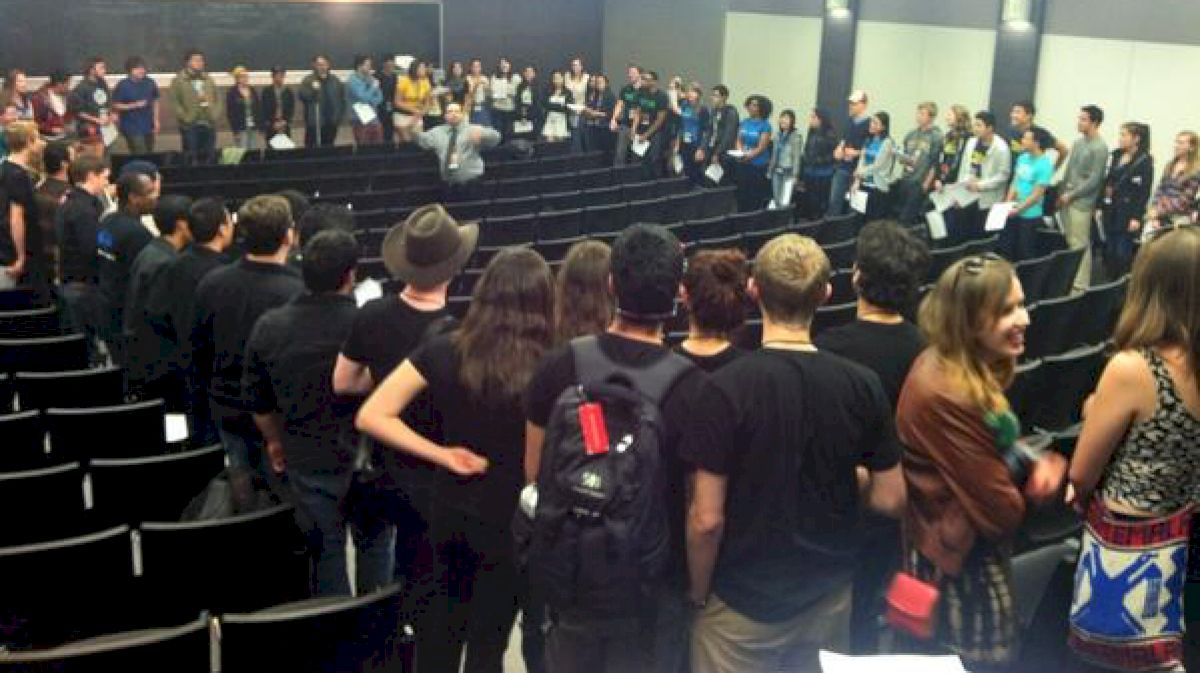Let's Shake Up The Workshop: Part 2
Let's Shake Up The Workshop: Part 2
In this installment, "Doc Ac" Marc Silverberg explores "The Track/Line Method."

This week, I’m going to suggest a different way a cappella festivals can frame their workshops to better accommodate participants who want to see everything but simply can’t be in two places at once.
Before you read on, please read Part 1.
Method 2: The Track/Line Method
This one is much harder to pull off, but the benefits outweigh the costs.
At the 2003 American Choral Directors Association’s national convention, festival participants were grouped into three “lines,” each representing a different color (such as red, white, and blue).
Depending on which line you assigned to, you were only permitted to attend specific workshops at specific times: For example, a BLUE line participant would NOT be allowed to attend a RED line participant’s workshop.
Here’s the catch though: Everyone saw (almost) everything. Workshops were offered several times over the four-day festival, ensuring every participant, at different times of course, was able to experience as many things as possible. No longer did you have to worry about missing one workshop because you were going to a different one. You could see them both, each at a designated time.
Fun fact: At the 2007 convention, they tried five colored lines. It was as big of a disaster as you might think.
Of course, there are significant disadvantages: If you and your friend were not on the same line, you would never be able to attend a workshop together. And, despite the complicated schedule, every line had to miss at least a few things, just because there were hundreds of workshop and concert offerings and only four days.
But I love the idea of offering a workshop more than once, and I especially love the idea of allowing everyone to see everything. The National A Cappella Convention (NACC) schedules a workshop more than once, and this year SoJam is doing the same.
I pulled this model from a smaller, state festival led by John Pickering, called the Nordonia A Cappella Festival. As an instructor, I was required to offer my workshop multiple times during the day, and each time a different group would experience it. Though the day got a little weary for me (not complaining), I was thrilled to know that everybody got a chance to experience everything.
To pull this off, these are the modifications a festival would need:
A. Festivals would need to hire only 5-10 instructors.
B. Festival participants would need to be designated a specific schedule based on their chosen line or ensemble.
C. Instructors would have to be prepared to teach the same class multiple times, ensuring their entire day was booked solid.
As you can see from the ridiculous class offerings, each “line” gets to see everything at slightly different times.
Next Week: The Masterclass Method
What are your ideas? Do you think the a cappella festival model is fine as it is? Do you think there is room for improvement?
By Marc Silverberg